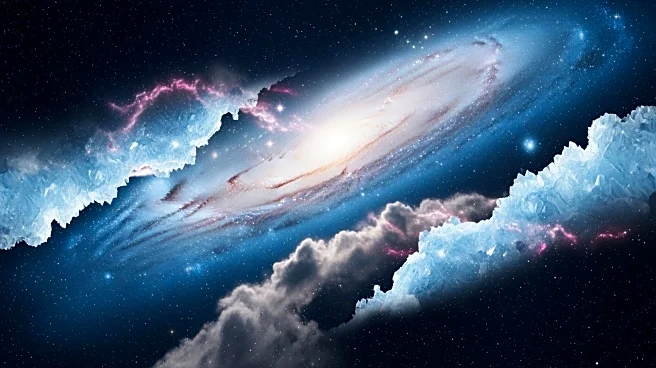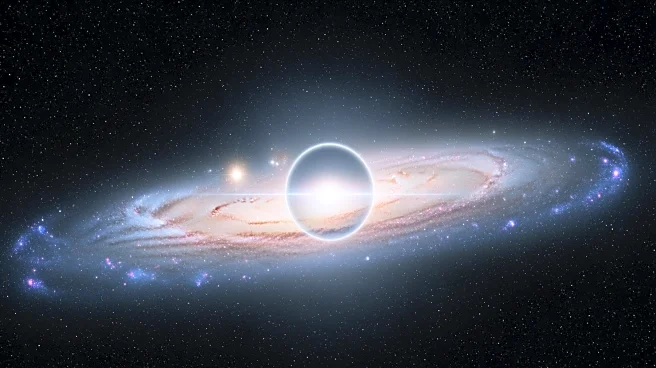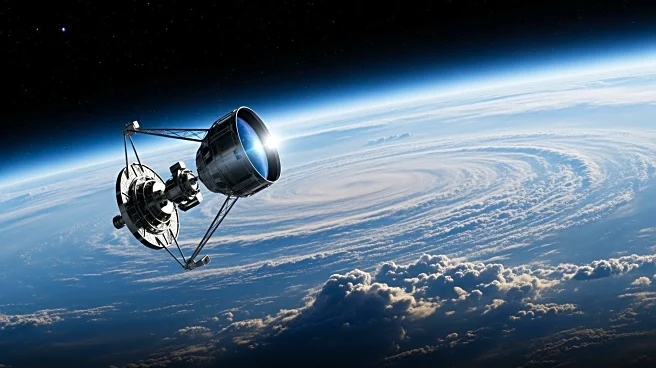What's Happening?
Astronomers have identified complex organic molecules (COMs) in ice surrounding a newborn star in the Large Magellanic Cloud (LMC), marking the first time such compounds have been observed outside the Milky
Way. Led by Marta Sewiło from NASA's Goddard Space Flight Center and the University of Maryland, the team found ethanol, acetaldehyde, methyl formate, and acetic acid in frozen form. These molecules are considered precursors to life, as they are involved in forming amino acids, sugars, and nucleobases. The discovery suggests that the chemistry necessary for life is widespread across the universe, not confined to our galaxy. The LMC, a dwarf galaxy with less heavy metal abundance and intense star formation, provides a unique environment for studying these processes. The findings were made using the James Webb Space Telescope (JWST), which analyzed the mid-infrared light from icy material around the star ST6, located 160,000 light-years from Earth.
Why It's Important?
This discovery is significant as it expands the understanding of prebiotic chemistry beyond the Milky Way, indicating that the building blocks of life may be common throughout the universe. The presence of COMs in the LMC, despite its metal-poor conditions and high radiation levels, challenges previous assumptions about the environments necessary for complex chemistry. This could have implications for the search for extraterrestrial life, suggesting that life could potentially arise in diverse cosmic settings. The research also supports theories about grain-surface reactions in space, where ice forms on dust grains, facilitating chemical interactions that produce COMs. By confirming these processes in a different galaxy, scientists can better understand the origins of life and the conditions that foster it.
What's Next?
The researchers plan to extend their study to more young stars in the LMC to determine if similar chemical processes occur throughout the galaxy or if ST6 is unique. This will involve gathering larger samples from both the LMC and the Milky Way to compare COM abundances and validate initial findings. Such research could refine models of prebiotic chemistry and inform future studies on the potential for life in other galaxies. Continued observations with the JWST and other telescopes will be crucial in expanding the sample size and enhancing the understanding of cosmic chemistry.
Beyond the Headlines
The discovery raises questions about the adaptability of life-forming processes in varying cosmic environments. The LMC's unique conditions, with less heavy metal and intense radiation, may offer insights into alternative pathways for chemical evolution. This could lead to a broader definition of habitable zones in the universe, influencing the criteria used in the search for life beyond Earth. Additionally, understanding the distribution of COMs in different galaxies could shed light on the role of cosmic events, such as star formation and radiation exposure, in shaping the chemical landscape of the universe.











